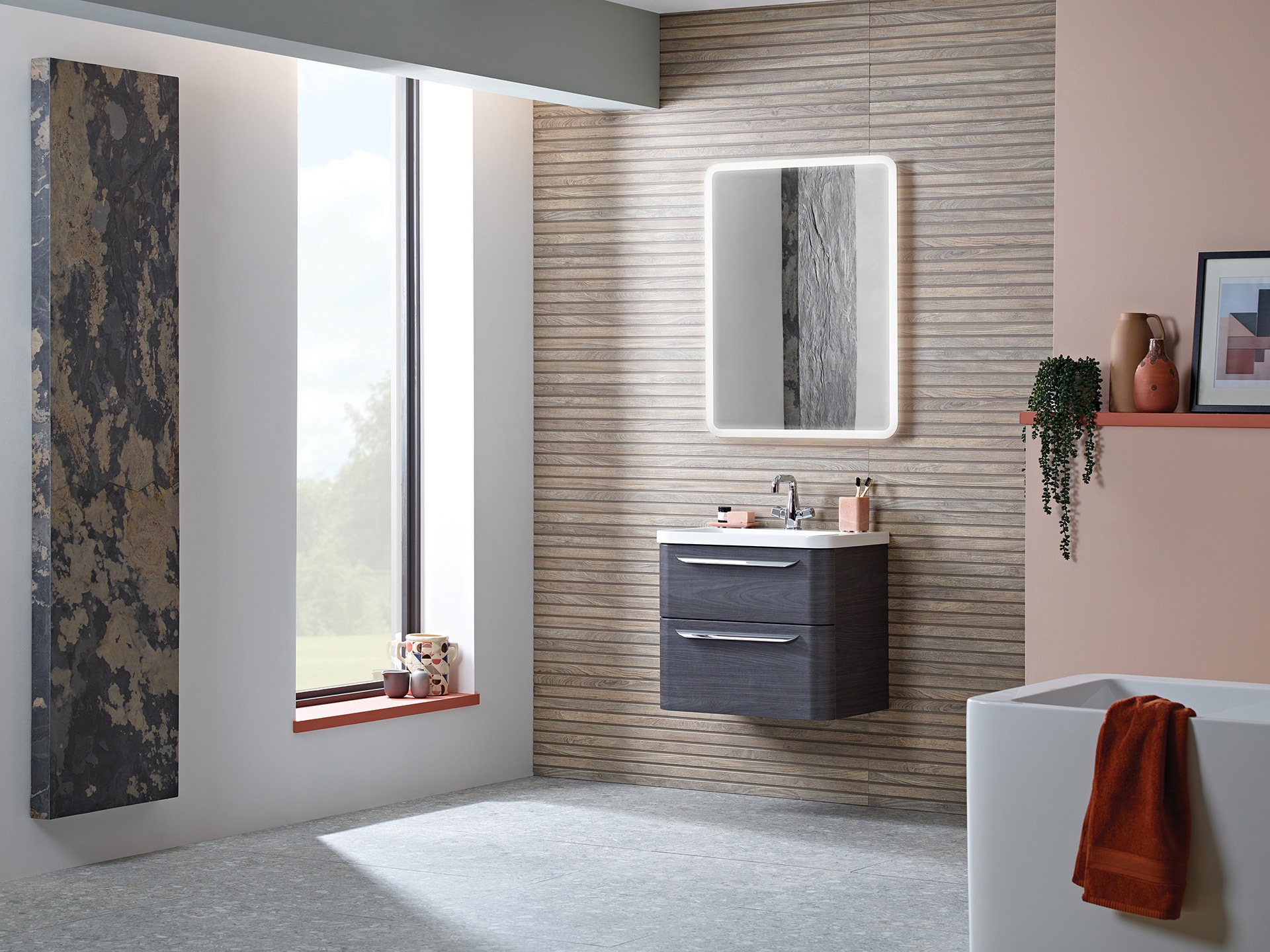Underfloor heating vs radiators: which is best?
Confused about what heating system is best for your home? We’ve got everything you need to know to help you choose between underfloor heating and radiators
Many of us still have conventional central-heating systems that pump very hot water to traditional radiators to heat our rooms. These systems are generally turned on and off when we need heat by means of timers or thermostats (or, increasingly, smart thermostats).
And, despite their name, the radiators actually largely rely on convection to heat the space. But things are changing rapidly, and many new builds and renovation projects today include underfloor heating. So how do the two systems compare?
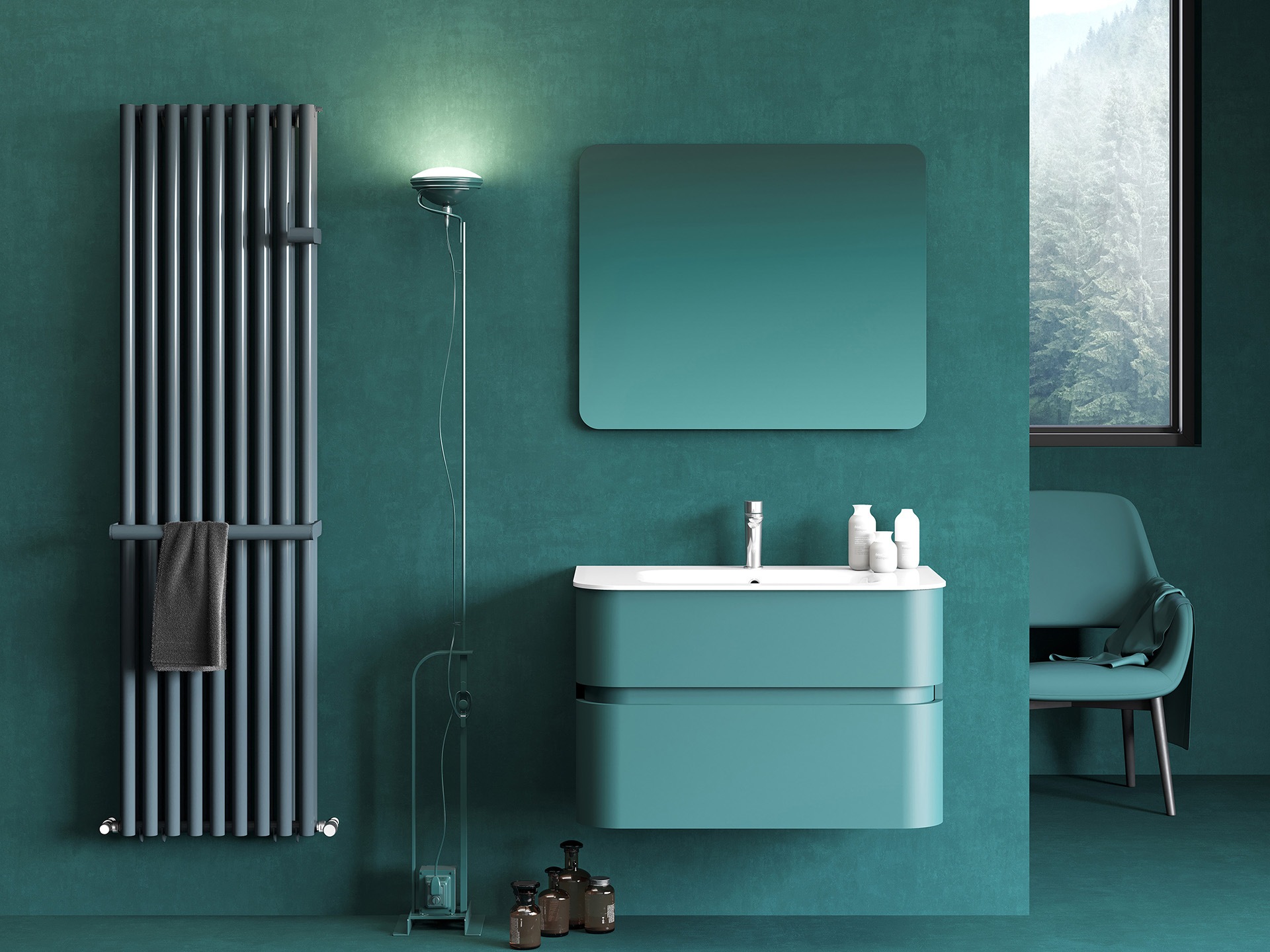
Image credit: The Radiator Centre
Underfloor heating
Underfloor heating can be electric or water-based (hydronic). Wet water-based systems (yes, it sounds like a tautology, but bear with us) consist of a network of pipes laid out in a serpentine or snail pattern on the floor of each room, with concrete screed poured over the top (it’s this that’s the ‘wet’ bit), and insulation boards below to stop all the heat escaping into the ground. Warm water runs through the pipes, heating up the concrete floor and turning it into a genuine ‘radiator’ in the sense of an emitter of radiant heat.
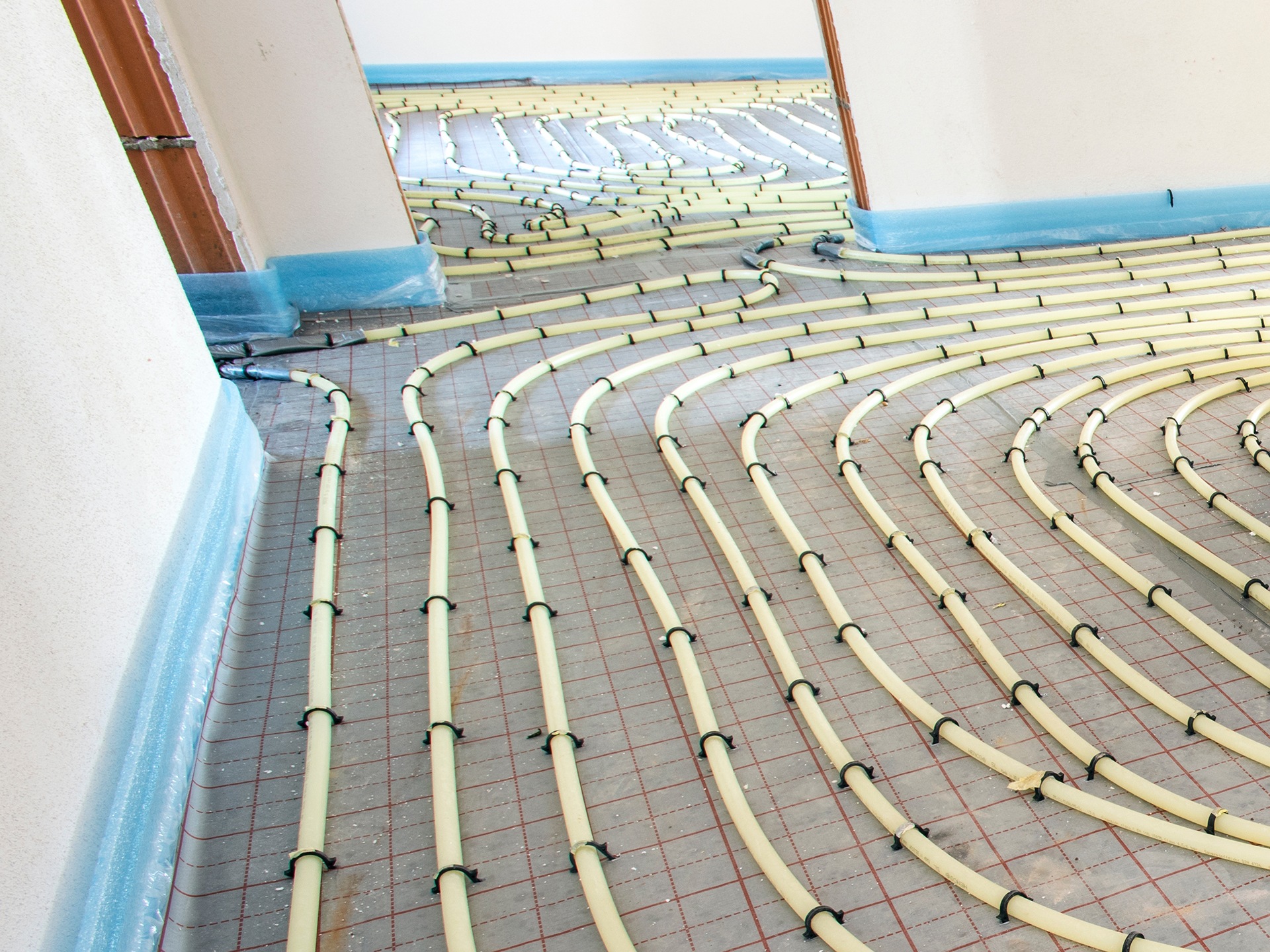
Image credit: Adobe Stock
The underfloor pipes connect to the supply pipes from the boiler or heat pump in an ugly nest of pipes called a manifold that needs to be hidden away in a cupboard, plant room or the like.
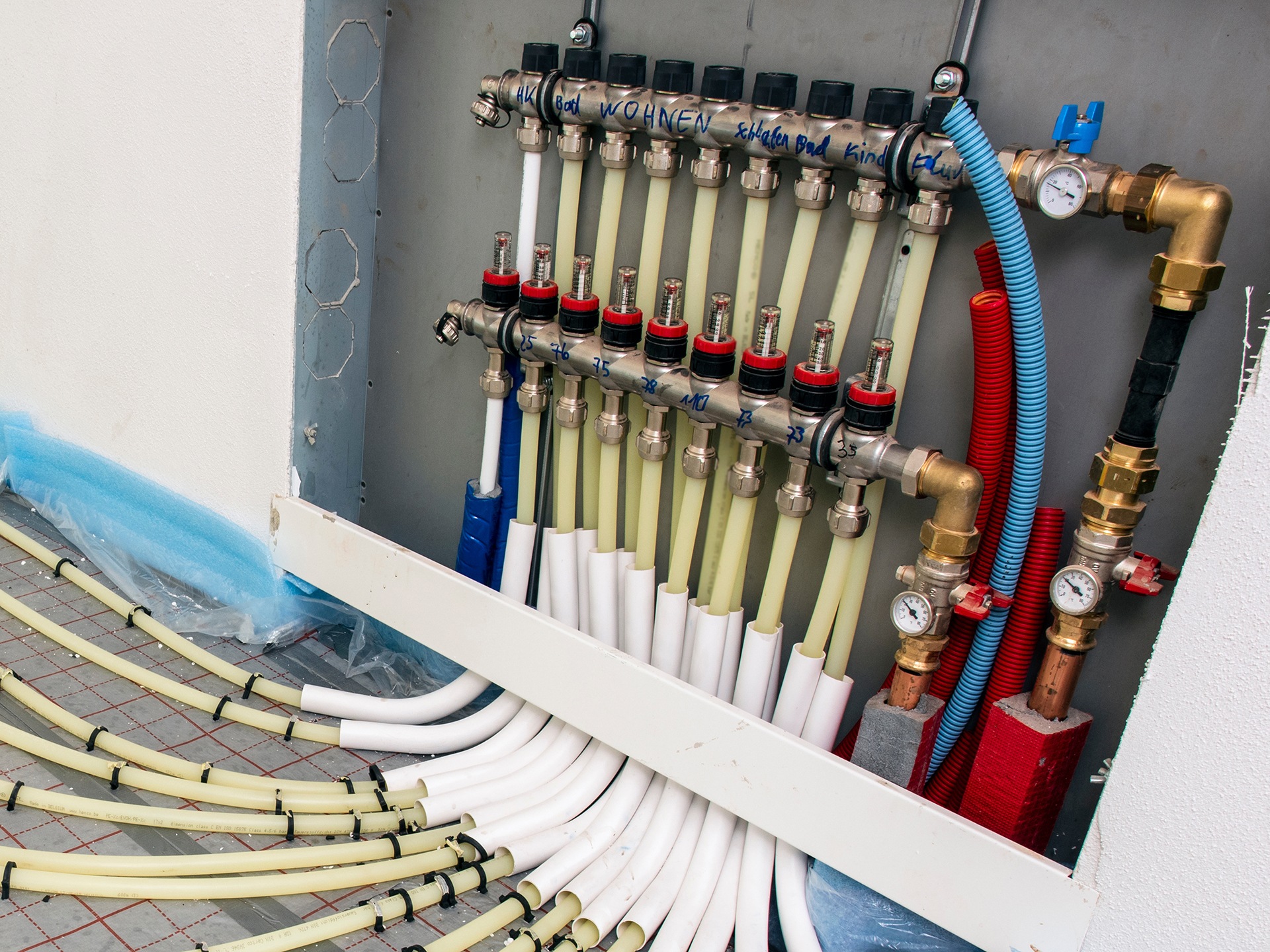
Image credit: Adobe Stock
Dry systems
‘Dry’ hydronic systems are good for situations where a concrete screed can’t be used, such as wooden floors and upper storeys, and in renovation projects. Here, the warm-water pipes are laid in a serpentine pattern on, or fixed within grooves in, insulation board or fibreboard laid on the floor.
There are lots of slightly different dry systems made by various manufacturers. Some feature aluminium plates, some are designed to go between wooden floor joists. If yours is a renovation project, choosing a ‘low-profile’ system that is very thin will avoid having to raise your floor too much, which can cause problems with existing doors etc. Just bear in mind that, if you are going to put underfloor heating under wooden flooring or thick carpet, both these materials have insulating properties that will block some of its effectiveness. Tiles, on the other hand, conduct heat well.
Electric underfloor heating
The other type of underfloor heating is electric. This consists of mats of wires in the same serpentine arrangement, which heat up when electricity is run through them. Mats work well as retrofits in individual rooms, and can even be installed by a competent DIYer. Generally, electric underfloor heating works well in smaller spaces and hydronic underfloor heating in larger spaces. Electric underfloor heating is a lot more expensive to run than water underfloor heating. Again, that points to using it in smaller rooms.
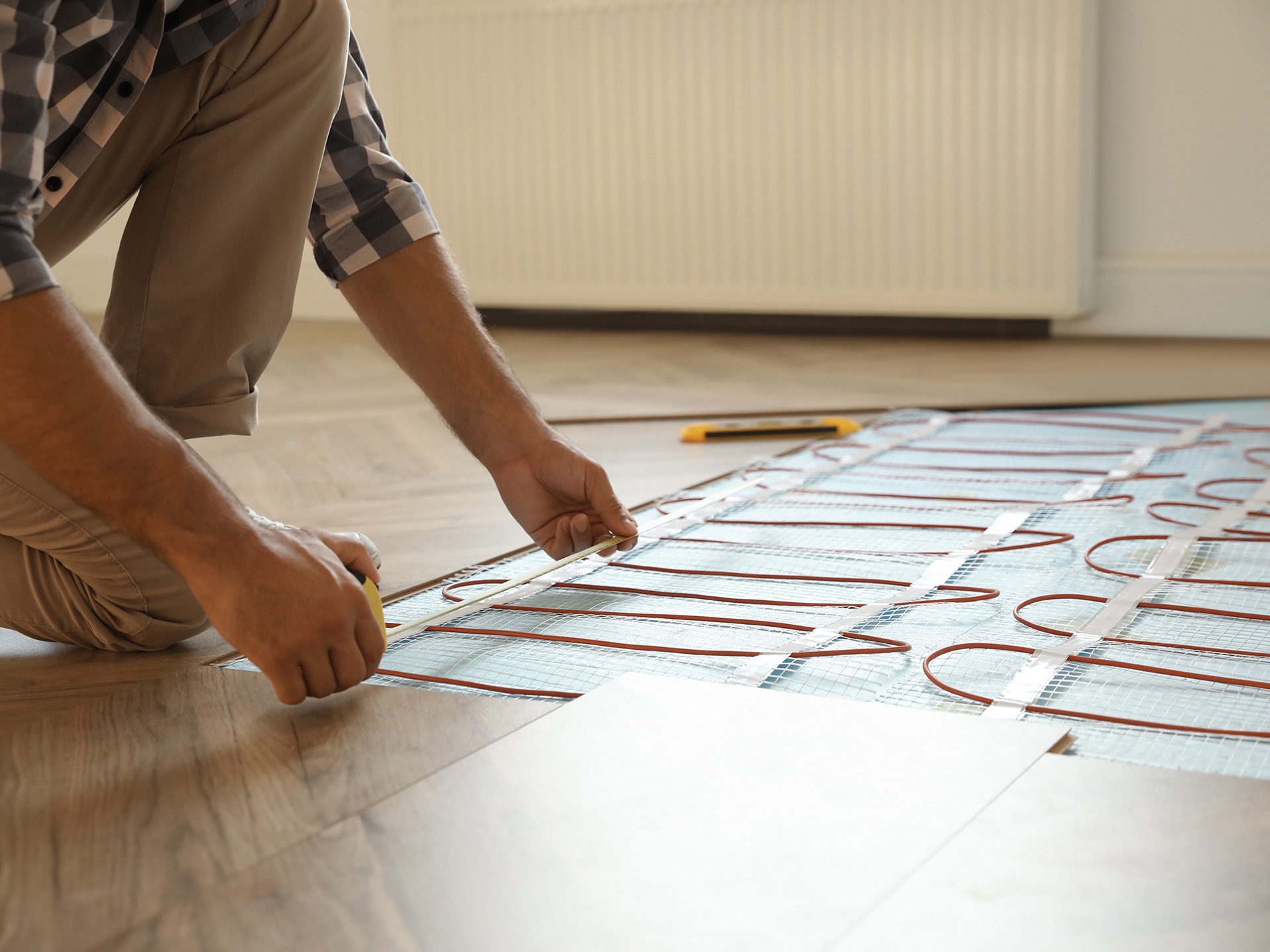
Low-temp heating
Underfloor heating is a low-temperature flow heating system that operates at between 35°C and 45°C. (After all, you don’t want to be hopping around on a floor that’s too hot to walk on.) It does, though, have a faster flow than radiator systems.
Heat pumps, too, operate at lower temperatures, typically between 30°C and 50°C. Both underfloor heating and heat pumps work best when they are left on under thermostatic control, providing a constant source of lukewarm heat that cumulatively warms the home, instead of the on-and-off blasts of high temperature that we are used to in conventional heating systems. Early in-screed underfloor system took a while to warm up. Today, though, there are underfloor systems, such as Wunda’s Rapid Response system, that warm up quicker, showing that many myths about underfloor heating aren’t true.
Radiators
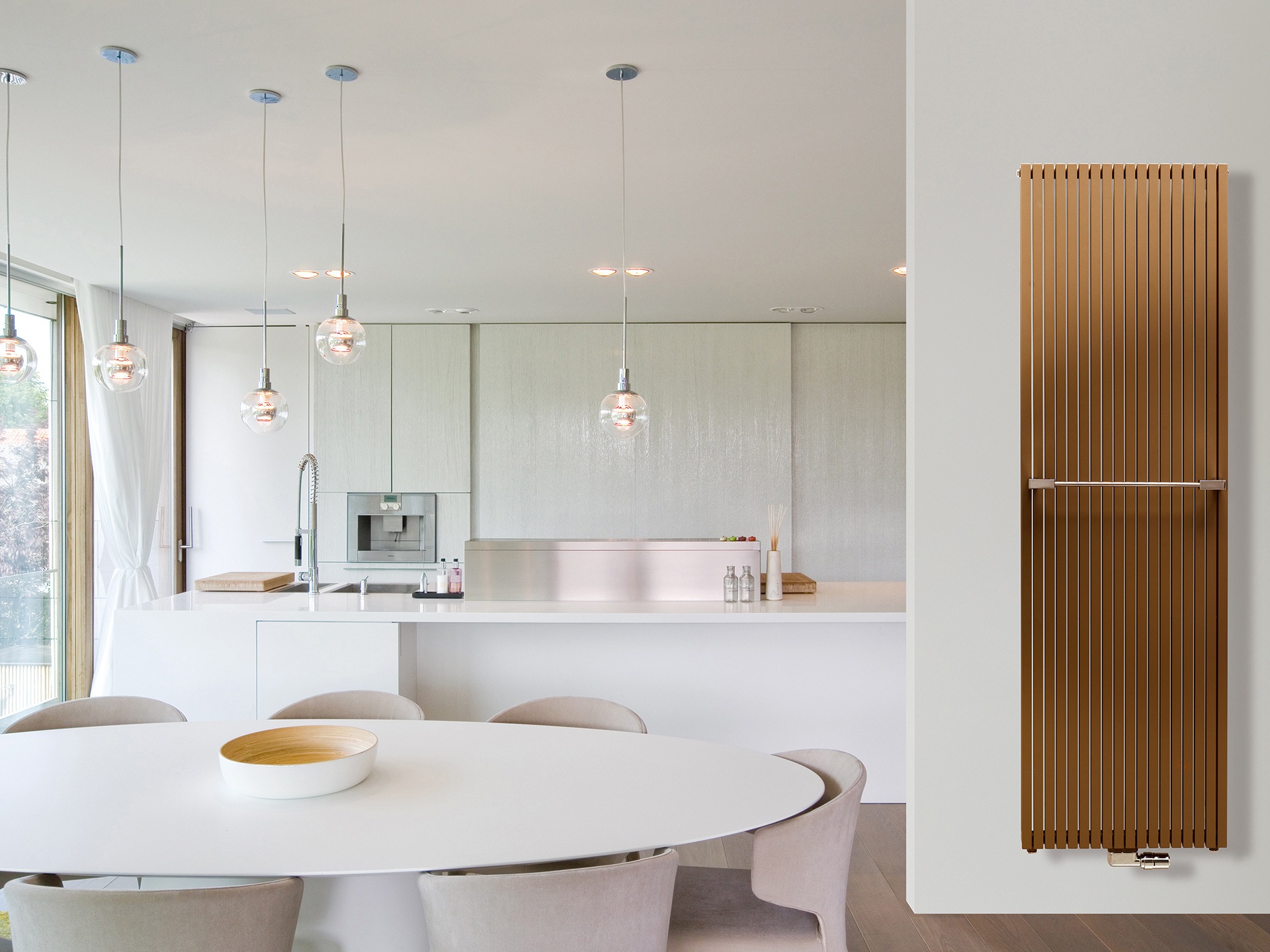
Image credit: The Radiator Centre
Most of us are familiar with how central-hearing systems work: gas, electricity or oil heats up water, then it is pumped round to radiators, which heat up and, in turn, heat space. The heat generated by radiators is, despite their name, in fact, mainly convected heat: air is heated by the radiator, this rises as it gets hotter, meanwhile new cooler air takes its place and is warmed by the radiator. As the warmed air cools, it sinks down, and the process begins again. A pattern of air circulation is set up, but a lot of energy is wasted warming air that ends up near the ceiling (see pic on left below).
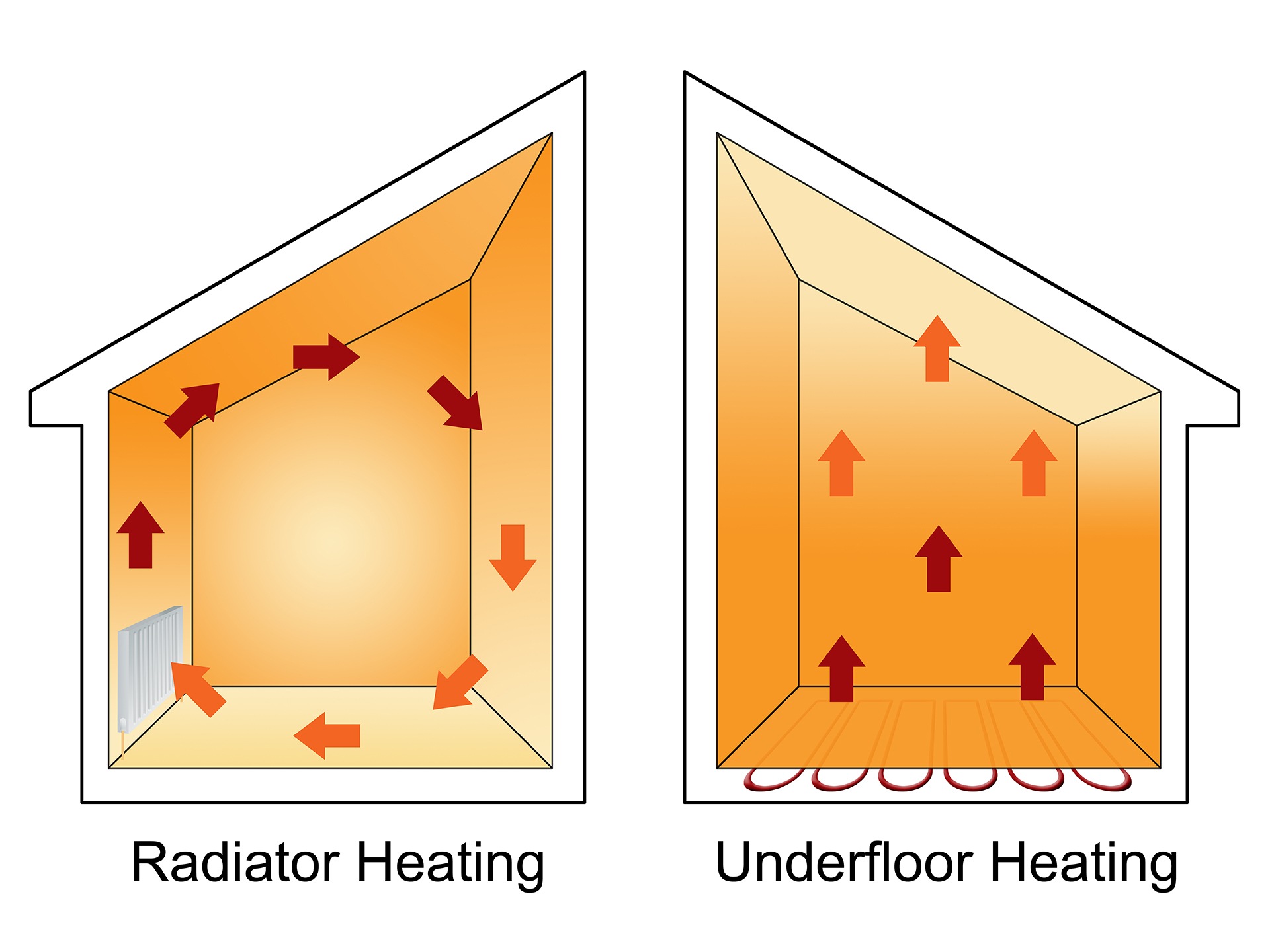
Image credit: Adobe Stock
Radiators with heat pumps
Although they basically still work in this same way, radiators have been changing. To heat a home with a heat pump, you often need bigger radiators because the water in them will be at a lower temperature than that from a traditional boiler. Alternatively, radiators containing heat exchangers, specially designed to work well with heat pumps are now available. We’ve got some examples here. Or check out the Strada Hybrid or Briza (below) from the Radiator Centre. Both are compatible with the lower temp flow from heat pumps and can even provide cooling in summer if they are plumbed into cold water too.
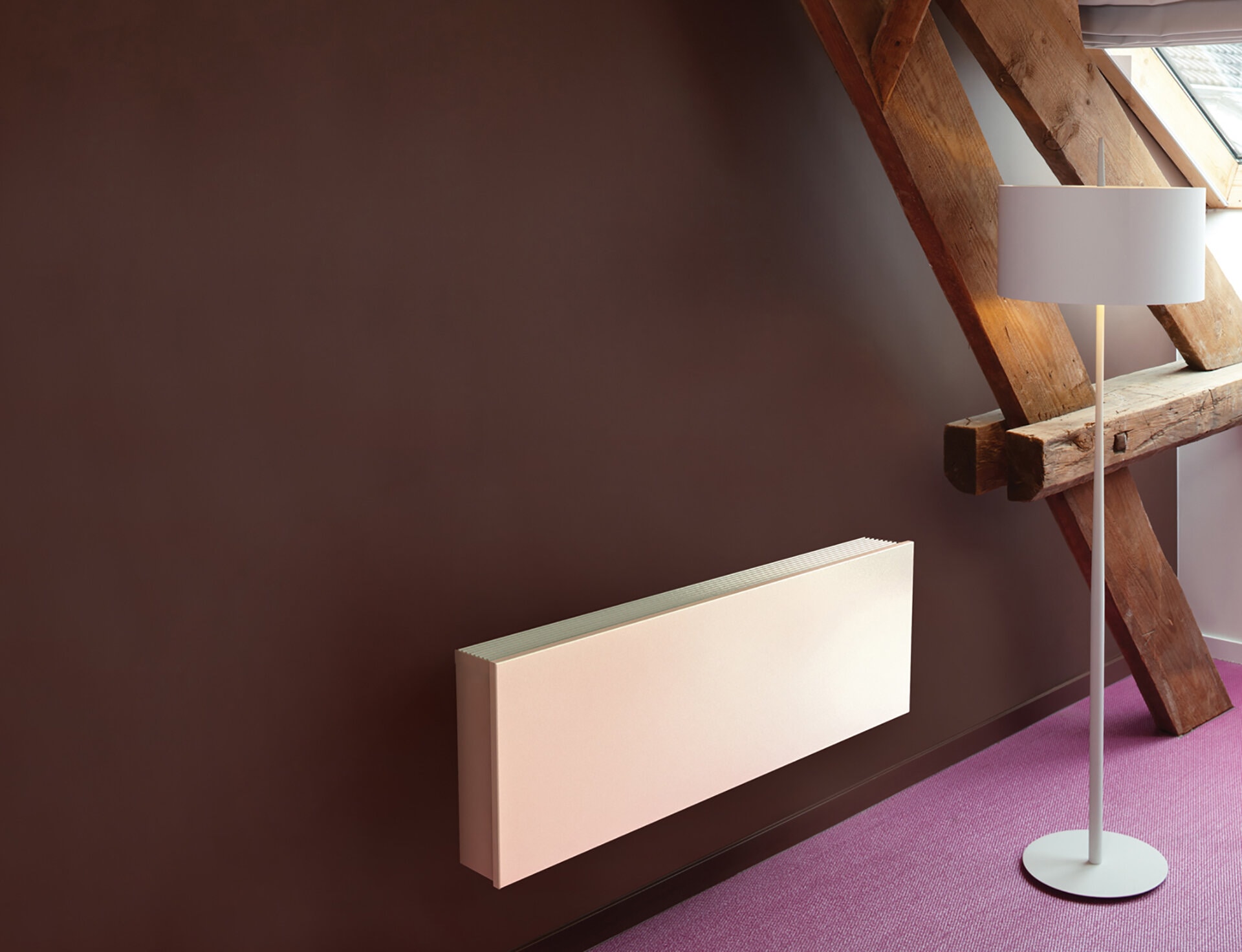
Image credit: The Radiator Centre
Radiator developments
Another development in radiators has been the arrival of the skirting radiator, such as Thermodul or ThermaSkirt. These systems run round the bottom of walls and look like skirting board but contain either electric or water-based heating. Whether these count as radiators is a moot point, but they are definitely a space-saving, minimalist option.
Aluminium radiators are increasingly popular, too, because aluminium is a more effective conductor of heat than steel. And, of course, you can also get all kinds of sculptural, high-end radiators that look just like works of art.
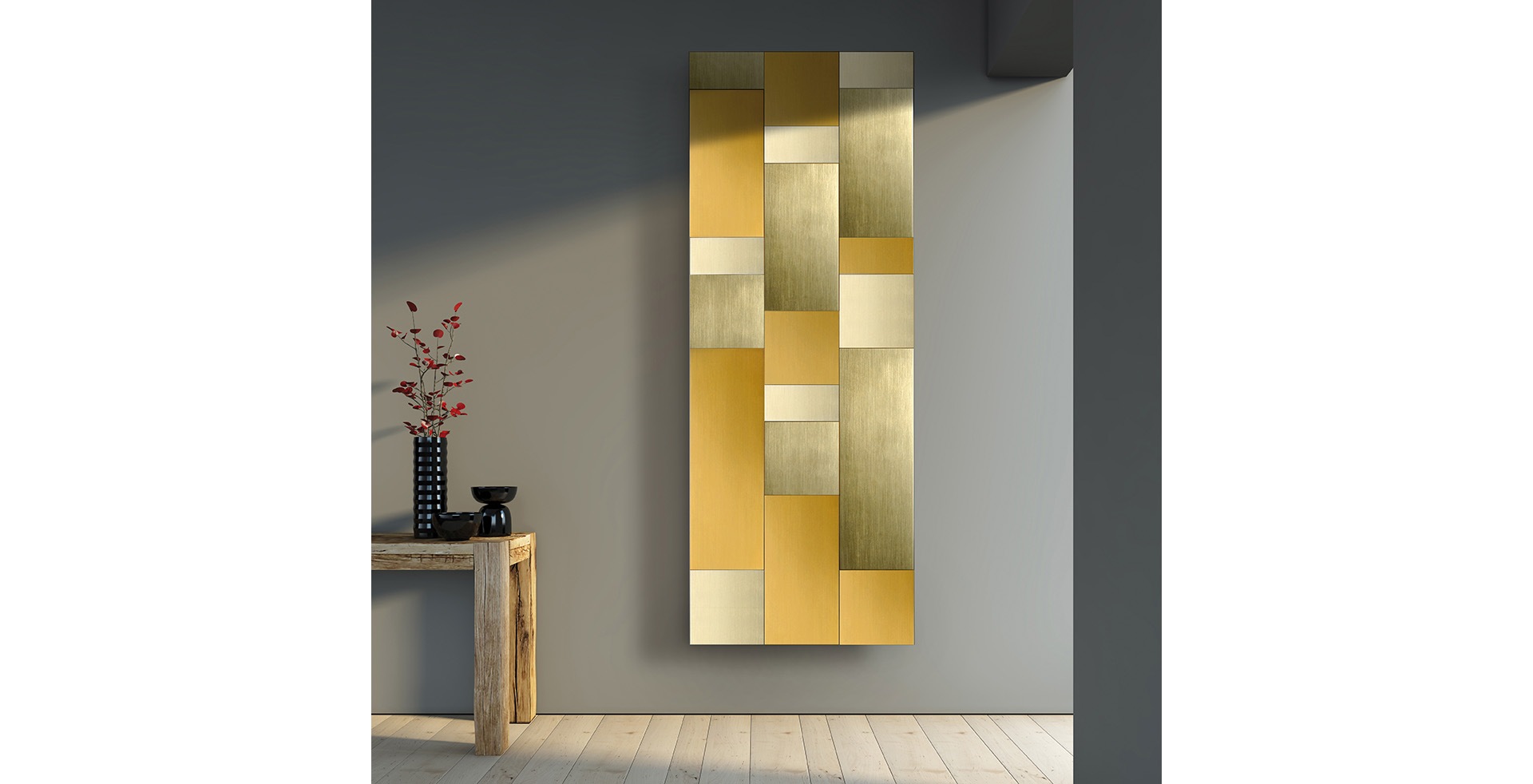
Image credit: The Radiator Centre
Feel good factor
One thing that even the most stylish radiators struggle to compete with is the fact that walking on a heated floor just feels lovely and luxurious. Many people who have experienced underfloor heating have no desire to go back to a radiator-based system.
Efficiency
Underfloor systems are generally more efficient than traditional central-heating systems. Whereas traditional systems heat water to 70°C or so, the flow temperature of underfloor systems is more like 40°C, although the flow rate is faster. Meanwhile, the warmest part of the room is near the floor – where you actually live, rather than up near the ceiling – thanks to the radiated heat coming from the floor. (Remember that diagram above.)
Controllability
If you want to be able to have different rooms at different temperatures, underfloor heating can usually be controlled room by room. Radiators, meanwhile, can, of course, be fitted with thermostatic control valves, and even smart thermostatic radiator valves that let you control each one individually.
Which boiler?
Because it uses lower temperature water, underfloor heating works well with heat pumps that will provide water at roughly the right temperature. Boilers are generally set to higher temperatures, so underfloor heating systems have to use a mixing valve to reduce the flow temperature to the underwater system, which may mean that you’re heating water beyond you need to use it at. Reducing the flow temperature of the boiler is a good idea, particularly if you have predominantly underfloor heating in your home.
Allergy advantage
Another advantage of underfloor heating is that it doesn’t stir up as much dust as the hot air convection patterns of radiators do.
Space saving
If you fully commit to underfloor heating, you will also save space because you won’t need any radiators.
Breakdowns
It’s easy enough to find someone to repair a gas boiler or replace radiators. People feel less confident about potential problems with underfloor heating: there is a fear of leaks and other problems in pipes that are set into the floor. Theoretically, that remains a valid concern, but underfloor manufacturers are keen to give consumers confidence in their products. They offer pipework made up of multiple layers and oxygen barriers to prevent rusting of aluminium pipes, while installers test set-ups for leaks in situ with pressurised air or water.
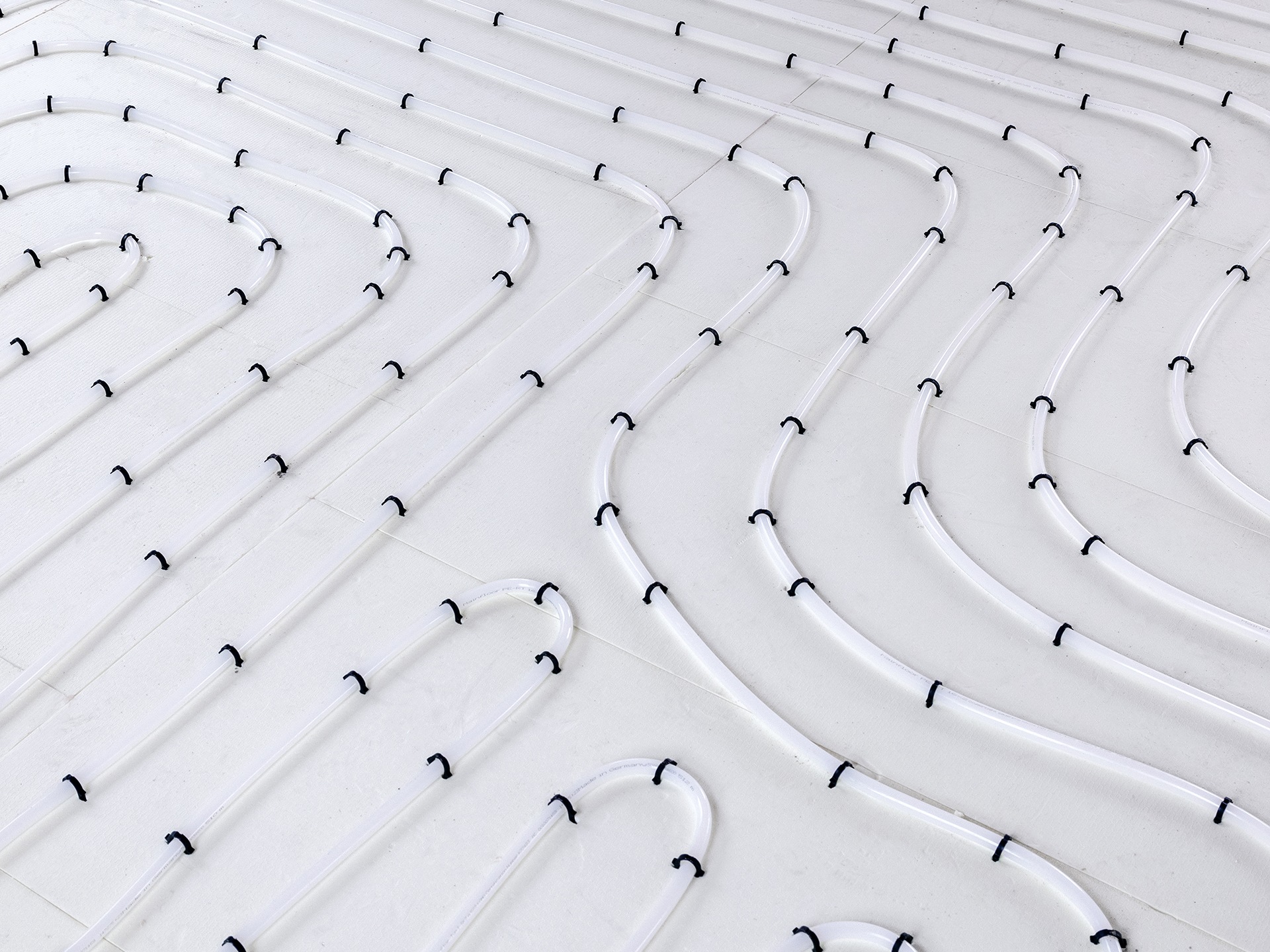
Image credit: Adobe Stock
Underfloor heating arguably needs less maintenance than radiators, which can need bleeding etc.
In terms of longevity, the combination of hot water and metal found in radiators is a recipe for rust. Radiators are reckoned to last 10-15 years. Underfloor heating is a new technology so we don’t really know how long systems will last: manufacturers claim 25 to 50 years.
Costs
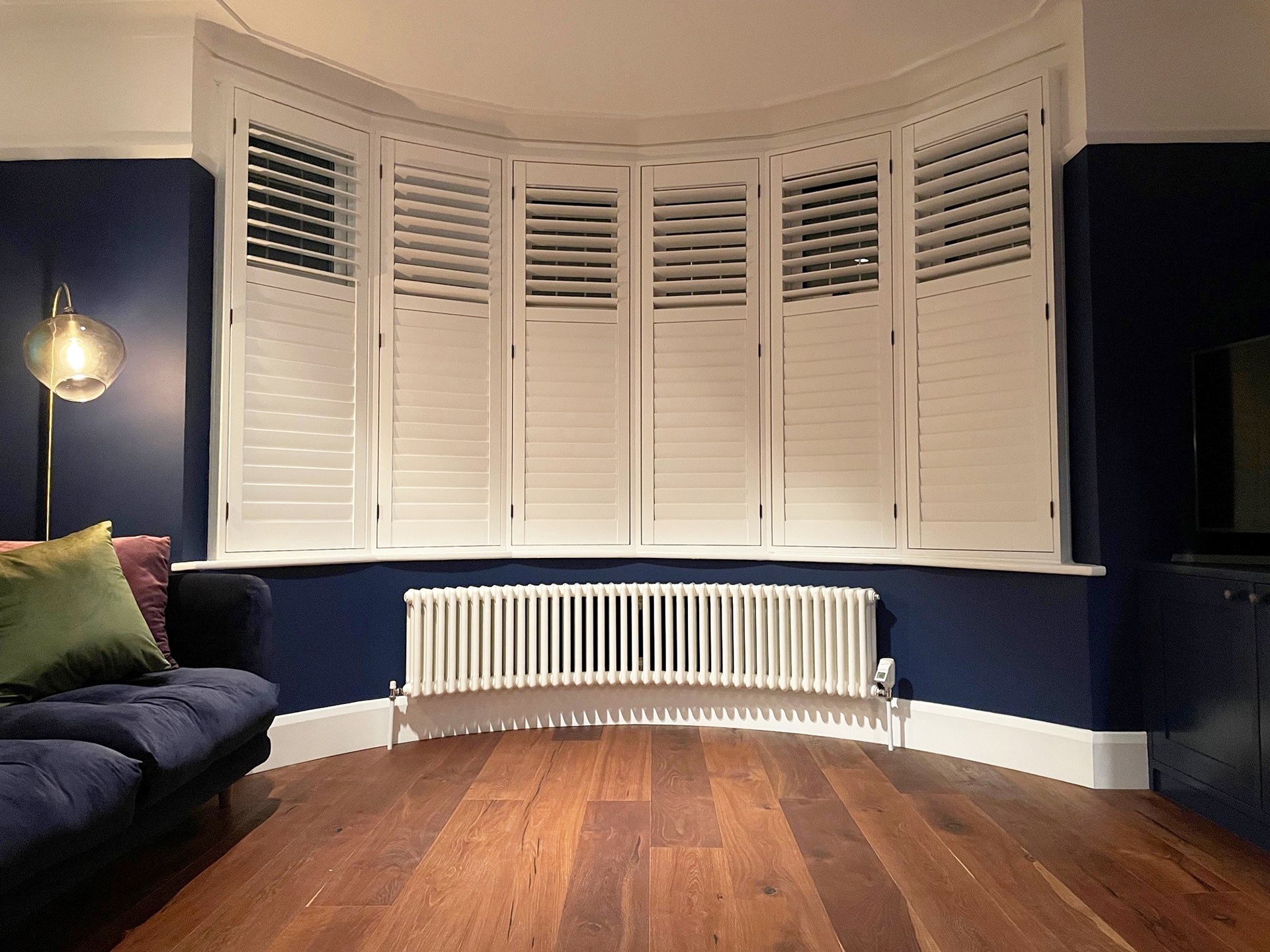
Image credit: The Radiator Centre
So far, the upfront cost of underfloor heating has been greater than that for radiator-based systems, but this is not always the case any longer. An exact cost comparison will depend on system specs and the house you want to heat.
Generally, the running costs for an underfloor system will be lower. If you’re doing a refurb, remember you will probably need to factor in the additional cost of new flooring or at least floor coverings if you opt to retrofit underfloor heating, whereas new rads can usually be slotted in relatively easily.
Sustainability
The sustainability of your heating system depends on what kind of energy you are using and how efficiently your system converts this into heat, plus the embodied carbon of the system itself. In a well-insulated new build, a low-energy system such as underfloor heating seems like the obvious choice.
Radiators can generally be recycled. Plastic pipe set into concrete is arguably a lot less easy to recycle.
Other factors
Other factors you need to take into account when choosing a heating system, include your lifestyle – how much time you spend in the property – and how well insulated the property is.
If you are starting from scratch in a new build, you will likely have better insulation, and then underfloor heating would seem like the obvious way to go, as it’s gentle low-temperature heat will be more effective. In older draughty period properties, hotter radiators may prove to be more comfortable.
Hybrid system
In renovations and refurbs, things might not be so cut and dried, a lack of insulation in your home could mean that, even if you want to install underfloor heating in some rooms, you may need to keep the radiators too and run a hybrid system.

